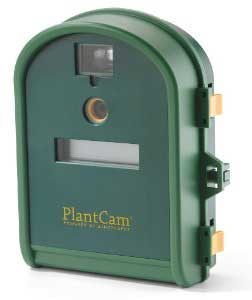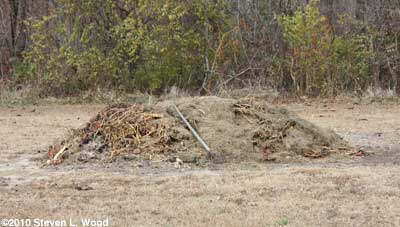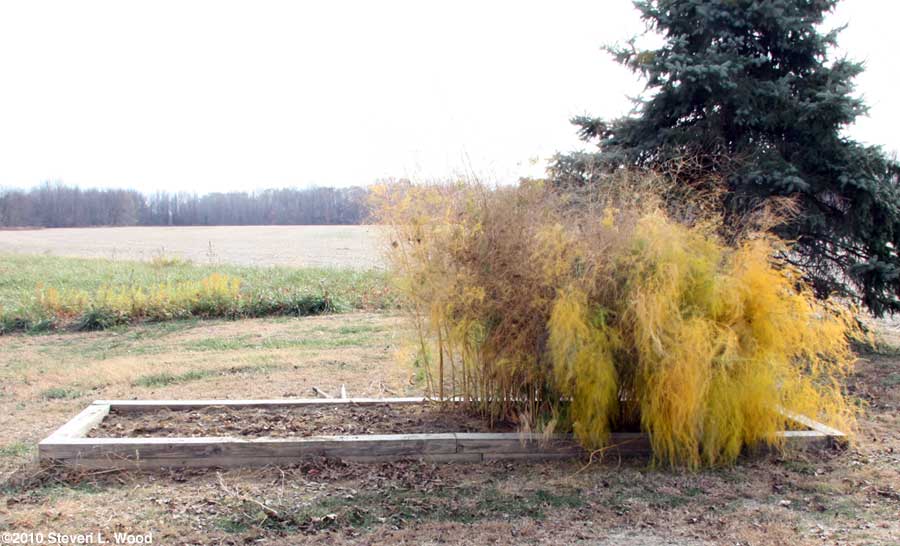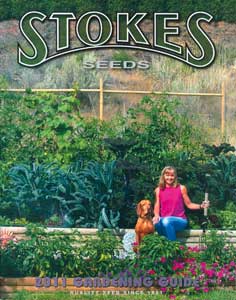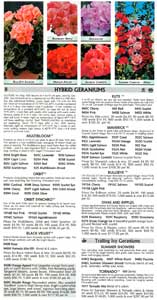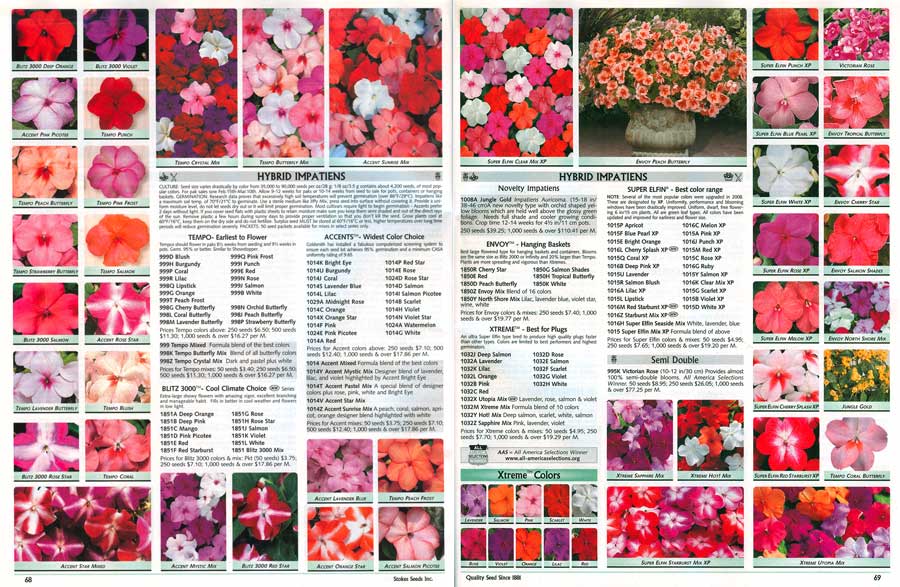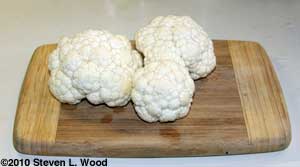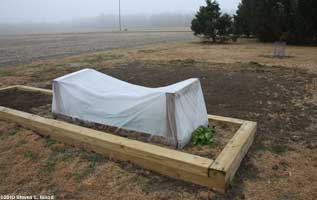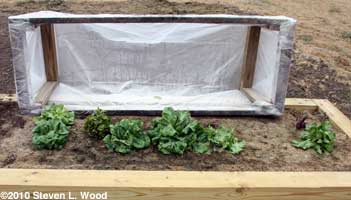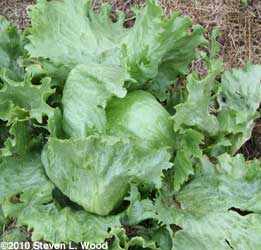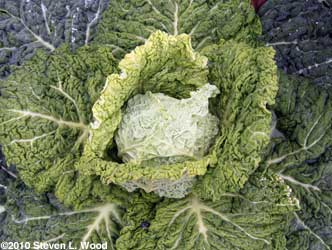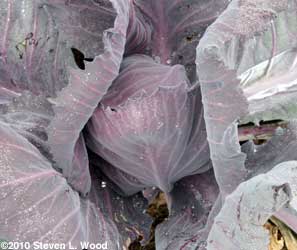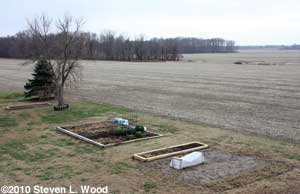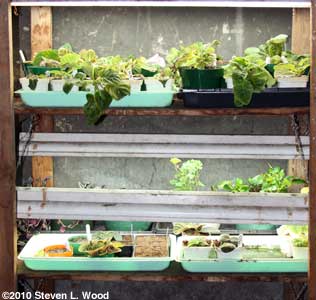One of the Joys of Maturity |
|
| Affiliated Advertisers |
Clicking through one of our banner ads or some of our text links and making a purchase will produce a small commission for us from the sale. The Old Guy's Garden Record
Wednesday, November 10, 2010 - Seed Inventory The JSS Advantage for November, the monthly newsletter of Johnny's Selected Seeds, suggests:
I haven't yet done a complete review of our 2010 garden, however, and still need to make a few notes about what worked well, what didn't, and ideas I'd like to try next year. If you notice a bit of difference in the appearance of the spreadsheets, it's because one (above, left) was opened in OOo4Kids (pronounced "OpenOffice For Kids") while I was writing a review of the latest update to the OpenOffice derivative for our Educators' News site. And while the name says it's for kids, OOo4Kids employs larger page displays, large default fonts, and simplified toolbars that are great for we seniors, too. Note that OOo4Kids and OpenOffice are free, open source alternatives to commercial office suite software.
I keep our seed sorted by general vegetable type (bean, corn, etc.) in Ziplock freezer bags. During planting season, the bags are kept in our refrigerator freezer. But once inventory is done, all of our seed goes into our manual defrost chest type freezer in the garage. Stored seed doesn't do well with the warming and cooling involved in the self-defrost cycles of most refrigerator freezers. The various seed bags go into two Ziploc Big Bags Getting back to the article on JSS Advantage, the following are suggested as possible fields for ones garden inventory spreadsheet:
Broccoli, Lettuce, and the Garage Project
Normally, I'd just pull the broccoli plants at this point. Since they are putting on sideshoots, and there's no telling when a freeze will kill them, I left the plants. I'm absolutely thrilled to be cutting fresh broccoli in November!
Our large East Garden is now fully "put to bed" for the winter. I turned over most of it with the tiller, but still need to find a place to store our various tomato and pepper cages. With our shed in bad shape (falling down) and our garage still under refurbishment, they'll just have to sit in the field for now. But I can finally stop having to shoot around our garage when taking pictures, which had become a bit of an eyesore with its leaky roof and decaying siding. It appears we'll get it sided and the new overhead doors installed before really bad weather sets in. And if you're wondering at the little roofed porch on the back of the garage, it's where our dog and cat doors are. Our dogs and cats have some rather deluxe, heated accommodations inside the garage.
It won't be long until garden seed catalogs for the 2011 season begin to come in. If you haven't requested catalogs (or ordered from a vendor which insures you'll get a catalog), now is the time to do so. The following are our favorite seed vendors. Links, where possible, are to the vendor's catalog request page.
Here are a few other outlets you might wish to consider. We either didn't use them this year or have had minor issues with them, so they're offered without recommendation.
We also ordered seed from GenericSeeds.com, but they're an online only outfit that doesn't have a mail order catalog. William Dam Seeds has been recommended by several readers. They only ship to Canadian addresses, though, and don't appear to have a print catalog request page. Full disclosure: Generic Seeds is a Senior Gardening affiliate advertiser.
I'm always on the hunt for reliable vendors of quality seed, especially those that offer open pollinated varieties. If you know of one we should consider, .
I added a small bale of peat to loosen the soil a bit, some lime and bone meal before using a garden fork to turn the soil as deeply as I could. Then I went over it a couple of times with the tiller, and it was planting ready. I put in three rows with garlic cloves spaced around 8-12" apart in the row in a 3'x16' bed. Since the soil is still very dry here, using a bulb planter was out, so I used a wide garden trowel to dig down about 6" deep for each clove. In the past, I've added bone meal under the garlic, but have found nasty clumps of wet bone meal the during the following summer's harvest. This year I broadcast the bone meal before tilling. I'd really hoped to get our garlic planted in October, but I couldn't bring myself to cut the zinnias that were growing where the garlic was to go. On the other hand, I got it in about half a month earlier than last year! Note that last year's garlic planting entry is a bit more complete than today's. The area between the garlic and our new raised bed got a thorough tilling, as I needed to rake down the hills I'd created for our peas and peppers this spring. I'd also not properly backfilled around the edges of the new raised bed until today. After smoothing the soil a bit, I went ahead and broadcast a bit of grass seed over the area to be returned to lawn next year. Saturday, November 13, 2010 - First Seed Catalog
I'm sure a lot of marketing strategy goes into the design of seed catalogs, along with some thought on the timeliness of their delivery. Catalogs sent too early might be forgotten or discarded, and those sent too late may only merit a quick glance if seed orders have been completed already.
Since Twilley Seed leans toward being a catalog for "farm, fresh market, u-pick, and bedding plant growers," not everything one might want for a home garden appears in it. But the commercial varieties listed for corn, melons, pumpkins and other items are also usually available in garden packets. Their corn runs a bit on the expensive side, but we've found it is worth it. Many of their offerings come in quite a bit cheaper than other vendors, possibly due to smaller amounts of seed, but still useable and a savings. A packet of the Red Zeppelin red onion mentioned earlier costs $1.45 (1/64 oz., or about 130 seeds), where the same item at Stokes runs $2.75 a packet (300 seeds). While Stokes cost per ounce actually comes out less, I don't need that many seeds, especially since onion seed doesn't carry over well in the freezer. We've had some issues with Twilley in the past, and they tried (not very hard) to resolve them to our liking. They did offer a full refund for the items in question, but failed to answer my question as to how an expensive packet of triploid melon seed would contain crushed seed and my germination tests of other seed came in far lower than what it should have been. I sent the refund check back, as what I'd wanted was an answer to my questions about their seed quality. I know that's being pretty picky, but I contrast that experience to one with Stokes Seeds.
My last project with the Garden Watch Cam turned out to be a bust. I was trying to get a time lapse of praying mantises emerging from their egg case. Since praying mantis emerge, well, when they're ready, it took a long time for them to come out. I forgot to check the batteries in my camera and ended up missing the event. But I plan to try again next year. We still end up ordering plant pot labels, melon, sweet corn, petunia and other flower seed from Twilley each year, as we like their offerings and price points. I've chalked up the previous bad experience to a bad year for Twilly. And it's nice on a chilly, rainy Saturday to just sit and page through a garden catalog. Monday, November 15, 2010 - Composting Composting organic material to create a super soil amendment can be about as complicated or as easy as one wants to make it. Fortunately, Lee Reich's AP column comes to beginning composters' rescue with a common sense article, Compost piles aren't as fussy as some think. Reich doesn't get into fancy, expensive composters, but looks at what is needed to start an effective compost pile. (Also check out his blog, In Lee's garden now, for more gardening common sense.)
As I build or turn our pile, I do add a bit of 12-12-12 fertilizer and lime. I've also used one of the many variants of a Jerry Baker Compost Tonic at times. The one I use to get a new pile cooking includes a 12 ounce Coke (regular, not diet), one cup of household ammonia, and a quarter cup of dish detergent. I mix about a cup of that mixture into a two gallon watering can and sprinkle it on the pile. But the main thing with a compost pile is to give it some variety and layer in a bit of dirt here and there. Turning a pile frequently accelerates the decomposition in warm weather. (See our September 1, 2010 posting to view the end product of composting.) One of my jobs today was to clean up our asparagus patch. I used loping shears to trim the stems slightly below soil level. The stems and fronds all went into a hole I'm working on filling, rather than into the compost heap. I may add leaves as a winter cover to the patch, but no fertilizer was required at this point. I'd added several inches of compost to the bed this summer which should take care of fertility. A good layer of manure would be nice, if I had it on hand. Saturday, November 20, 2010 - Another Seed Catalog
We get a host of unsolicited seed and garden catalogs each year that often don't merit a mention here on Senior Gardening. Seed quality, reliability, price, and customer service are probably the main things we consider when looking at seed vendors. But as I've mentioned before, an attractive catalog always catches our eye and at least gets a perusal. As I paged through the Stokes catalog the first time, I was struck at their incredible two-page display of impatiens varieties. And in answer to your possible question, no, Stokes, Johnny's, Twilley, Harris, and Shumway are not Senior Gardening affiliated advertisers, although I wish they were. They just all sell good seed. (See our November 11 posting for a list of seed suppliers.) Cauliflower and Lettuce
While I cut the first head of cauliflower this morning, I was thinking (other than about how cold my hands were) about how nice it was that I didn't have to worry about cabbage looper worms in the cold weather. Then I found a cabbage looper worm, alive and well, at the base of each of the next two heads of cauliflower!
Thanksgiving Day Approaches As our family Thanksgiving feast approaches, it has fallen on me to be our menu maker this year. I get lots of input from family members about their various favorites, but the task of organizing the menu (and getting most of it cooked) is mine. While our garden suffered terribly from a drought this fall, I was surprised at the bounty of choices I had at hand for our Thanksgiving celebration. No, we don't raise poultry or beef anymore, but in almost every other area I found myself choosing between options from our garden. Do we have sweet potato yams or butternut squash "yams?" Green bean casserole, peas, sweet corn, broccoli and cauliflower, kale, or glazed carrots for vegetables? Only when it came to mashed potatoes was I a bit disappointed. Our potato crop was truly a failure this year, so they'll get Potato Buds In a time when many in our country are out of work and/or homeless, and many more in the world are ill, mistreated, and go to bed hungry, it's important to remember the freedoms and bounty we have and be thankful for it. Thursday, November 25, 2010 - Thanksgiving Day (U.S.) Like many of you, we will be with our family on Thanksgiving Day and will be celebrating the many blessings the Lord has bestowed upon us. We continue to be in reasonably good health, and our children are all healthy and doing well. Rejoice evermore. 1 Thessalonians 5:16-18 Happy Thanksgiving
And while our previous gardening season is over, we'll need to get our seed geraniums started next month, seed orders completed and sent, and by early January have our onion transplants started. On my "list" of things I didn't get done this season are preparing a bed for spring peas and a general tilling of our main, raised garden plot. I've been a bit indecisive on where to put our peas next spring, and ended up just not making a decision or getting the bed prepped. Fall preparation of a pea bed allows one to get a really early start with spring peas (think early March) by just hoeing a row if the ground is thawed, or spreading the peas on the surface and either poking them into the soil or covering them with purchased, bagged potting soil. The weather might break enough that I could still get the bed prepped...if my mind thaws a bit and I decide where to put the row.
From the
at Senior Gardening |
©2010 Senior-Gardening.com

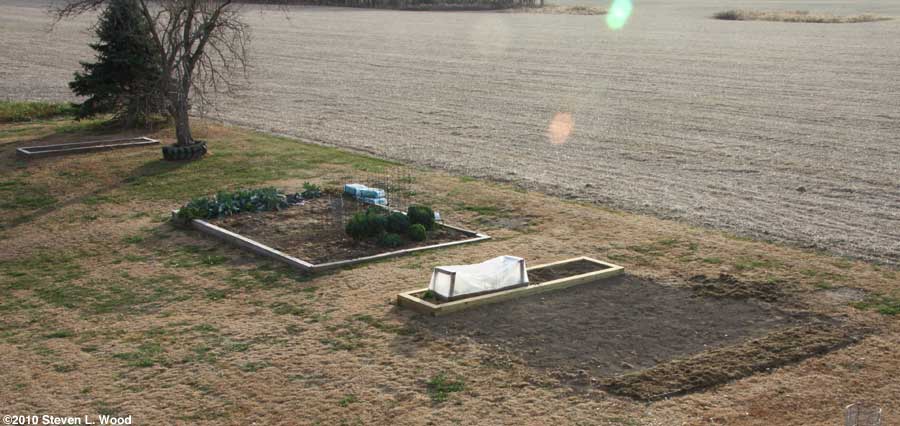
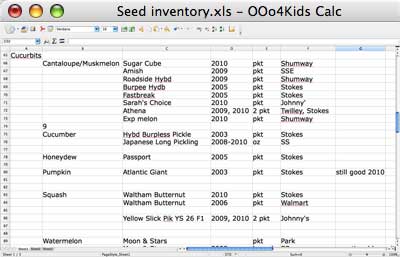
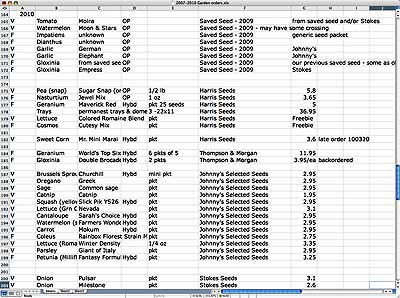
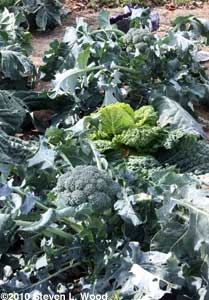
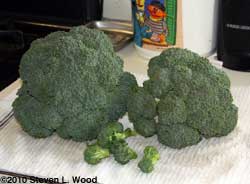
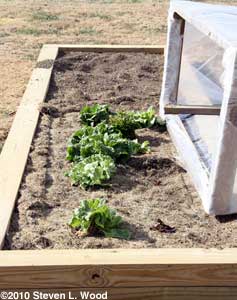
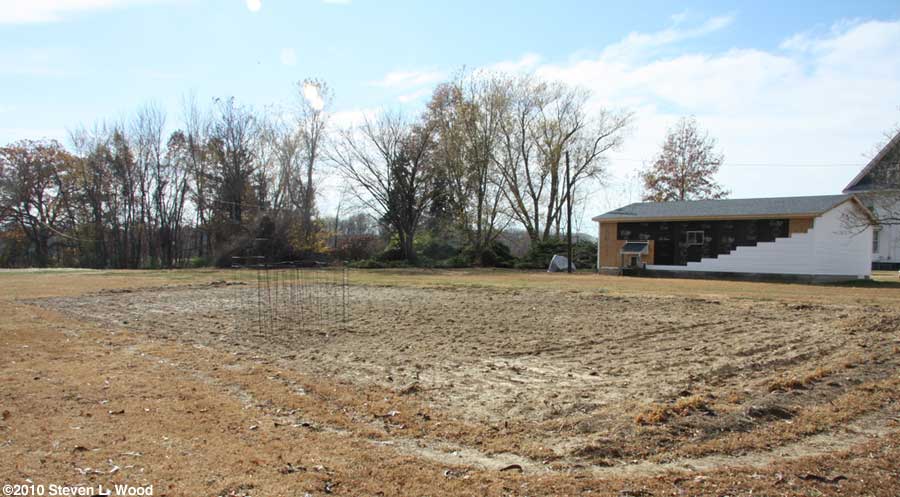

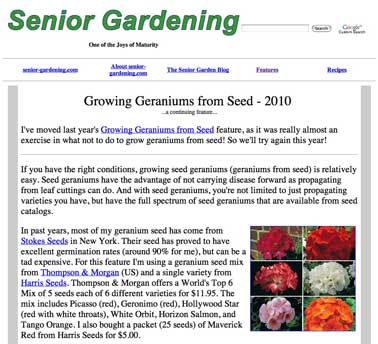

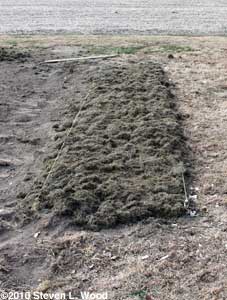
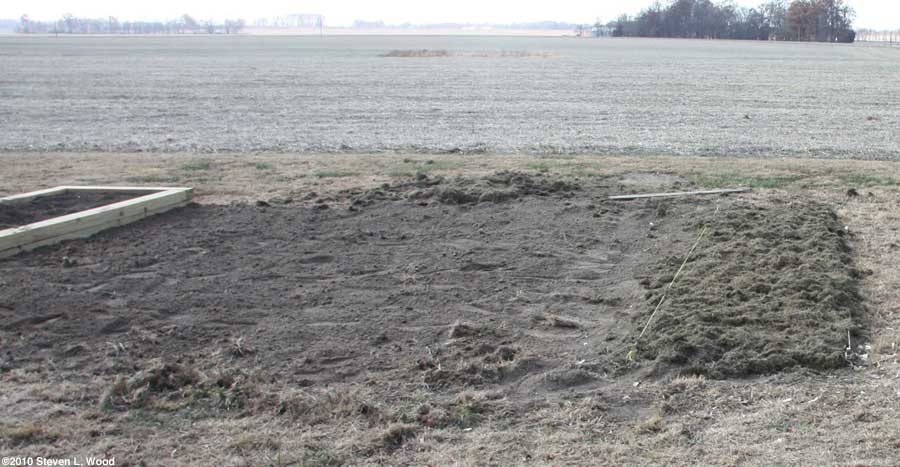
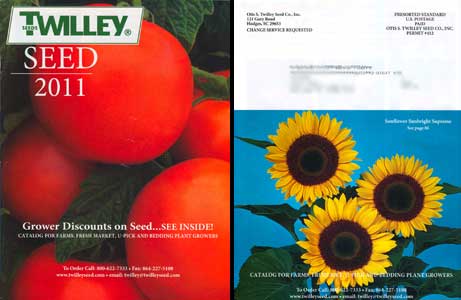
 But for us, the first seed catalog of the year is a bit of a celebration of the coming gardening season. If from one of our
But for us, the first seed catalog of the year is a bit of a celebration of the coming gardening season. If from one of our 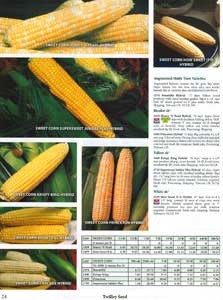 In the time we lived on a farm and raised 2-4 acres a year of sweet corn for roadside sales (and to fill our freezer), we ended up using Twilley Supersweet varieties exclusively, as they were a delicious supersweet, and also provided better ear tip wrap, important for roadside sales by folks who didn't spray their corn all that much. (We often sprayed tassels with mineral oil, but only rarely used a pesticide in the sweet corn.) While we don't order our sweet corn seed in 25# bags anymore, we still use several Twilley varieties, along with a few from other vendors that we've tried and liked.
In the time we lived on a farm and raised 2-4 acres a year of sweet corn for roadside sales (and to fill our freezer), we ended up using Twilley Supersweet varieties exclusively, as they were a delicious supersweet, and also provided better ear tip wrap, important for roadside sales by folks who didn't spray their corn all that much. (We often sprayed tassels with mineral oil, but only rarely used a pesticide in the sweet corn.) While we don't order our sweet corn seed in 25# bags anymore, we still use several Twilley varieties, along with a few from other vendors that we've tried and liked. 
